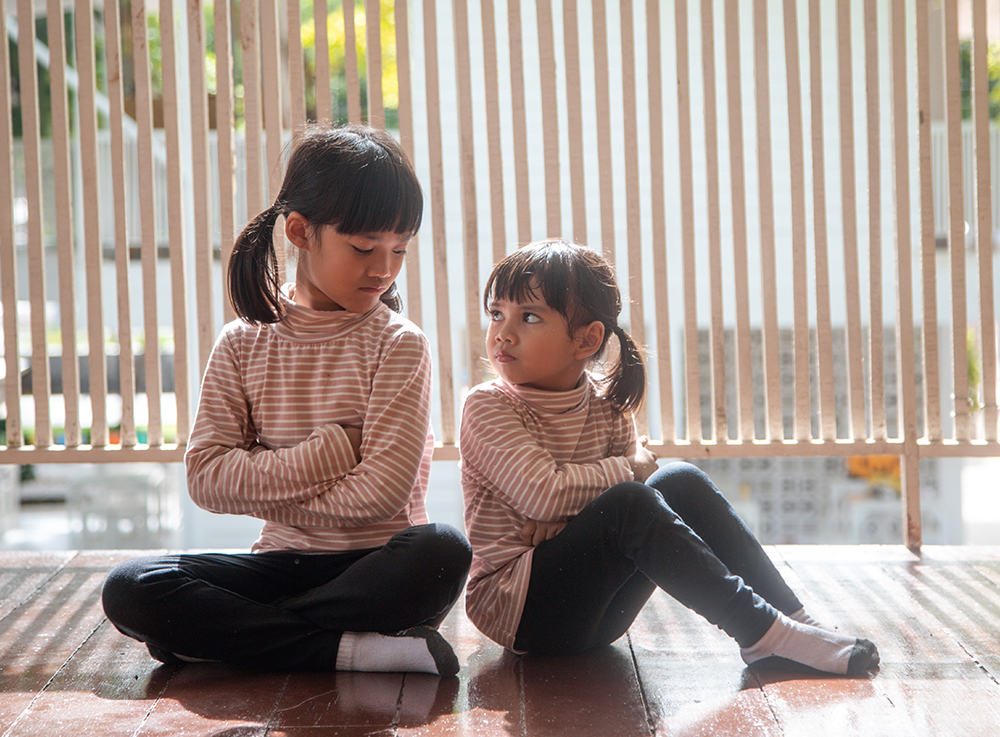
Benefits of Imaginative Play
Written by: Elise Sledge
“Hurry! Jump on top of your couch and avoid the lava!”
“Whoa… a dinosaur is sleeping in your bed. What should we do?”
“If you were the ruler of a distant planet, what would you do first?”
What is Imaginative Play?
Imaginative play involves role-playing experiences that allow a child to safely explore alternate realities. Imaginative play can look different based on a child’s interests and culture, expressions of feelings and choices. While there are general guidelines for imaginative play, the specifics vary greatly. For example, imaginative play tends to reflect a child’s real experiences, like pretending to be a parent to a doll or playing doctor. This allows children to learn and reflect on different adult roles, which can vary based on culture. Adults can also engage in imaginative play, often taking form in games like Dungeons and Dragons or charades, and meditative practice.
Benefits
There are numerous benefits to engaging in imaginative play for people of all ages.
- Fostering Creativity and Problem
Solving
- In imaginary play, there is no limit to what can happen. Whales can swim in the sky, a 6-year-old can be President, and supervillains can climb through the TV to attack at any moment! To engage in imaginative play is to use creativity, as imaginative play involves solving unique problems, telling detailed stories, and taking new perspectives. Creativity is an important skill to develop because it can reduce stress and allow for self-expression, which has life-long benefits.
- Developing Social Skills
- During imaginative play, children learn to take turns, share, and work together. Sometimes play involves limited roles and props; children must learn to share responsibilities and wait to take on their role. Engaging in play with one’s community (e.g., classroom, neighborhood, after-school program) also increases feelings of connectedness, confidence, and self-reliance.
- Developing Emotional Skills
- Learning and practicing different perspectives in play can allow children to practice caring for others and showing empathy. They can also practice managing unpleasant emotions, as the characters they play may encounter difficult situations. Practicing these emotions will prepare them to handle the same emotions in their own lives. This can help to decrease anxiety when facing new emotions and situations.
- Develop Language Skills
- Engaging in imaginative play often requires communication between many characters, whether the characters are real or imaginary. Describing and narrating what is happening increases children’s vocabulary and language skills. Increased skills can lead to more comfort in social situations, as children learn about the influence of oral language and how to use it to create and tell stories.
How to Encourage Imaginative Play
- Help your children to have new experiences. Go for a walk around your neighborhood, visit a new store, explore a park, or ride the public bus. While you are out, talk with your children about what is going on around them, ask questions, and teach them how you would respond in certain situations.
- At home, encourage children to use their imagination with everyday objects. Surprise them with a sword battle from a paper towel roll or lay down a bath towel for a beach day in the living room. Bring the magic to them by introducing new scenarios. Once they understand the theme, let them take the lead and ask them “what happens next?” Props can be important, and they can be made from anything in the house. If you prefer your kids to use certain props over others, it could be helpful to create a designated space for their imaginative play. Having a specific drawer or basket of items like old clothes, office supplies, or scrap paper can provide kids the freedom and opportunity to engage in imaginative play. Cardboard boxes can be trains, planes, or spaceships!
- Get involved when you can! As your child permits, take on your own role in their story. You can be anyone you want to be!
- Common scenarios for imaginative play:
- Role-play different professions like doctor, teacher, or singer
- Fight supervillains and play superheroes
- Play as parents
- Pretend to travel
Feeling Stuck?
Sometimes it is hard as an adult to engage in imaginative play. It can feel silly or embarrassing, and it may be difficult to think of new ideas. It takes practice! It may feel unnatural and uncomfortable at first, so it is important to remember that imaginary play is limitless. What is “right” or “wrong” is up to whoever is playing! Also, it could be helpful to utilize the internet to make some DIY props or lead fun, new scenarios. Use sites like Pinterest or watch guided visualization videos on YouTube for inspiration.
Get your friends and partners involved, too! If fighting invisible superheroes with your kid is not the first step you would like to take, try playing charades, creative writing, or going outside to explore with friends. Take photos of your community on your phone or camera as if you are a visiting tourist. If you look for inspiration, you will find it!
Enjoy exploring new worlds with your children and friends!


